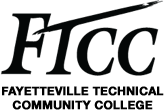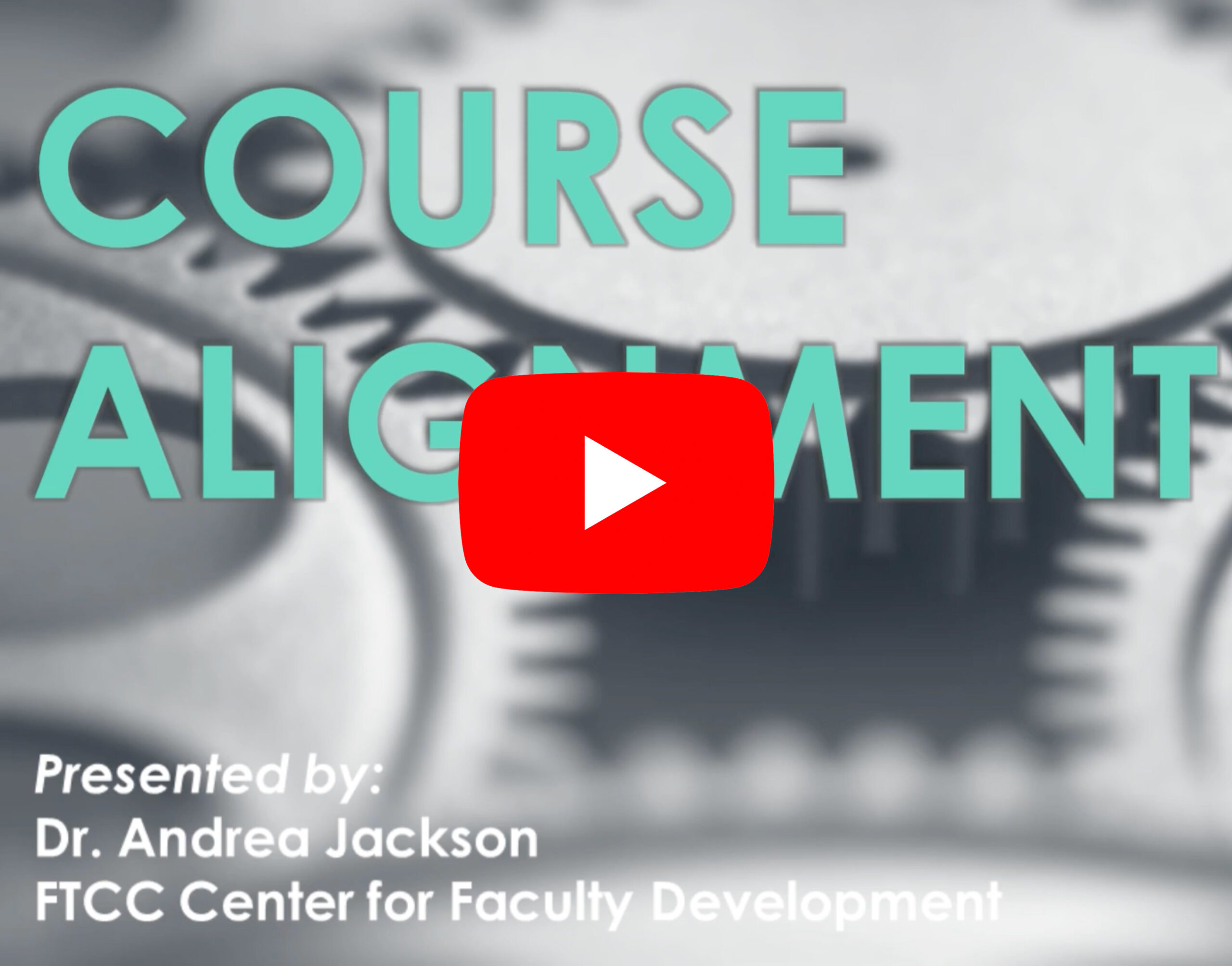The course alignment initiative at Fayetteville Technical Community College is in full swing! These notes provide more clarification on the process, expectations, and feedback cycle [Download pdf]. Please contact the Center for Faculty Development with questions!
IMPORTANT NOTES:
- After a course map is submitted, feedback will typically be provided by the Center for Faculty Development within 3-5 business days.
- Sometimes, the Center may ask clarifying questions and/or request that the course map is modified and resubmitted to receive further review.
- Assignment “grades” are either 0 or 100. If resubmission is required, the grade will remain a 0 until all requirements have been met and feedback has been noticeably implemented.
- Once the course map is given a grade of 100, the assignment notes will indicate the course map has then been approved and is ready to transition to Blackboard Ultra.
Key Terms
- Aligned: When a course is “aligned,” it means that the following process is successfully reflected in the course map:

- Assessments: Assessments can be formative or summative. Assessments determine if the module objective(s) or course objective(s) have been successfully mastered. Assessments evaluate previously learned content and/or skills and should also inform the instructor whether previous content (or skills) should be reviewed or if new content (or skills) can be introduced. Assessments also inform the instructor which students need additional support or extension based on the determined level of mastery.
- Assignments: Assignments are tasks directly aligned to specific Module Objectives. These are usually graded tasks requiring students to demonstrate specific levels of understanding of Module Objectives and course content/skills (such as separating DNA fragments using gel electrophoresis, successfully inserting an IV in a patient, correctly installing a socket, compare different literary works by the same author or executing a specific style of hair cut).
- Bloom’s Taxonomy: Bloom’s Taxonomy is a hierarchical approach to ensuring students’ understanding of content progresses beyond mere recall. Each subsequent level of Bloom’s Taxonomy raises students’ involvement with and connection to the content and/or skill.
Bloom’s Taxonomy Action Verbs Graphic
Use the resources above to evaluate Course Objectives, Module Objectives, and Assignments for strengthening students’ understanding of the content. Modify unclear or passive language in Objectives and Assignments for clarity and relevance.
-
- For example, rather than using a Module Objective stating, “Demonstrate understanding of the digestive system,” modify that objective to incorporate clearer, more active language and a higher level of Bloom’s Taxonomy.
-
- A more precise and effective objective would read, “Recall the parts of the digestive system and explain their functions.” The Assignment and/or Assessment would be for students to, “Label the parts of the digestive system and explain how each part functions in an essay.”
-
- A rubric could be used to evaluate open-ended responses (or to measure mastery of each skill level in an application-based course).
Taking the assignment and the required level of understanding to the next level requires students to develop and prove a deeper relationship to the content. Consider the following, higher-order thinking assignments:
-
- Compare and contrast the functions of two major organs from two different organ systems.
- Explore diseases that affect the (insert organ system). Selecting one of those maladies, design an infographic that illustrates symptoms and potential treatments.
- Analyze and evaluate data on the effectiveness of a specific psychotropic drug. Create an infomercial outlining your findings.
- Investigate a non-functioning electrical outlet to discover the cause. Create a short video tutorial (YouTube style) describing the problem and explaining how to fix it.
- Develop a model of (insert topic) and use it to teach the information to others.
Bloom’s Taxonomy is not just for general education courses; it can be applied to any content area. CTE courses can use the hierarchy to ensure that required skills are increasing in difficulty or complexity from Module to Module or from one Assignment or Assessment to the next.
-
- For example: Students taking skills-based or application-based courses might have a Module Objective that looks like this, “Investigate common errors in makeup application and describe options or methods for remedying those errors.”
- Then, the aligned Assignment could be, “Select a common error in makeup application (i.e.: choosing a foundation that is too dark or overcorrecting with concealer) and create an infographic, short commercial, or poster illustrating how to properly correct that error.”
- Course Alignment: Course Alignment is a campus-wide initiative of quality assurance. This is the first step in the process of certifying FTCC courses applying the Quality Matters assessment rubric.
- Course Description: This description is provided by and comes directly from the NC Combined Course Library. It should not be altered. Course Objectives should be derived from this description.
- Course Objectives: Course Objectives indicate what broad, overarching skills and/or content should be demonstrably mastered at the end of the course. Derived directly from the prescribed Course Description, Course Objectives should then be broken down into specific Module Objectives for targeted learning.
- Measurable: This term refers to whether mastery of an objective can be determined.
-
- For instance, a Module Objective such as, “Demonstrate an understanding of the importance of the American Revolution” is difficult to measure for mastery. How will the learners demonstrate that they “understand?”
-
- A more effective objective would be, “Analyze and explain the impact of the American Revolution on American foreign policy.” Then, a targeted, measurable assignment would be to, “Develop an argument agreeing with or defending the following statement: The American Revolution impacted and influenced America’s foreign policy until the Jacksonian era.”
-
- In an application-based course, a measurable Module Objective might be, “Observe, explore, and explain common/potential health issues in post-surgical patients.” Then, an aligned Assignment could be, “Reflect on potential health issues of post-surgical patients. Select one common issue and develop a treatment plan for overcoming that potential obstacle.”
- Module Objectives: Module Objectives are specific, targeted objectives that break the broader Course Objectives into smaller, (more easily) measurable chunks. Assignments and assessments are directly aligned to these Module Objectives, completing the thread of alignment that starts with the Course Description and weaves through the course.
The FTCC Center for Faculty Development is available to support the Course Alignment Initiative as well as other programs, plans, and needs of our faculty and staff. Please email the Center (cenfacdev@faytechcc.edu) for additional clarification, questions, or further assistance in this process.

